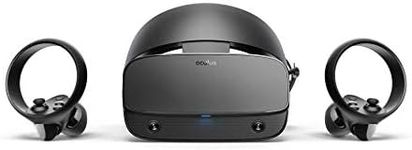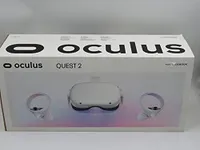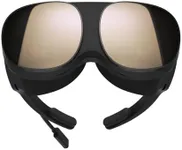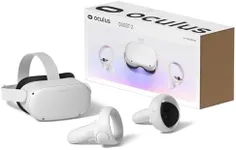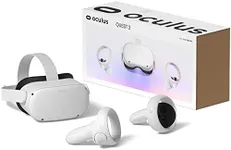Buying Guide for the Best VR headset for pc
Choosing the right VR headset for your PC can be a thrilling yet daunting task. Virtual Reality (VR) headsets offer an immersive experience that can transport you to different worlds, enhance gaming, and even provide new ways to work and learn. To make the best choice, it's important to understand the key specifications and how they align with your needs and preferences. Here are the main specs to consider when selecting a VR headset for your PC.ResolutionResolution refers to the number of pixels displayed on the screen. Higher resolution means clearer and more detailed images, which is crucial for an immersive VR experience. Resolutions can range from 1080x1200 per eye to 2160x2160 per eye or higher. If you want the sharpest visuals and plan to use the headset for detailed tasks like simulations or design, go for higher resolutions. For general gaming and casual use, a mid-range resolution should suffice.
Refresh RateThe refresh rate is the number of times the display updates per second, measured in Hertz (Hz). A higher refresh rate results in smoother motion and reduces motion sickness. Common refresh rates for VR headsets are 60Hz, 90Hz, and 120Hz. For a comfortable and fluid experience, especially in fast-paced games, aim for at least 90Hz. If you are sensitive to motion sickness or want the best possible experience, consider headsets with 120Hz or higher.
Field of View (FOV)Field of View (FOV) is the extent of the observable world seen at any given moment, measured in degrees. A wider FOV enhances immersion by allowing you to see more of the virtual environment. Typical FOV ranges from 90 to 120 degrees. For a more immersive experience, look for headsets with a wider FOV. If you are new to VR or using it for specific applications like productivity, a standard FOV might be adequate.
Tracking SystemThe tracking system determines how the headset and controllers track your movements. There are two main types: inside-out tracking and outside-in tracking. Inside-out tracking uses cameras on the headset, making it easier to set up and more portable. Outside-in tracking uses external sensors for more precise tracking, which is ideal for room-scale VR. Choose inside-out tracking for convenience and portability, and outside-in tracking if you need high precision and have a dedicated VR space.
Comfort and FitComfort and fit are crucial for extended VR sessions. This includes the weight of the headset, the type of head straps, and the materials used for padding. A lighter headset with adjustable straps and breathable padding will be more comfortable for long use. Try to find a headset that fits well and feels comfortable on your head, especially if you plan to use it for long periods.
CompatibilityCompatibility refers to how well the VR headset works with your PC and other hardware. Ensure that your PC meets the minimum system requirements for the headset, including GPU, CPU, and USB ports. Some headsets are also compatible with specific VR platforms or software. Check the compatibility to ensure a smooth setup and optimal performance.
ControllersControllers are your primary means of interacting with the virtual environment. They come in various designs, with different levels of precision and functionality. Look for controllers that are comfortable to hold and offer intuitive controls. If you plan to play games that require precise movements, opt for controllers with advanced tracking and haptic feedback.

